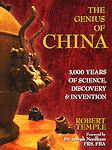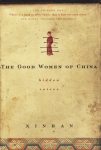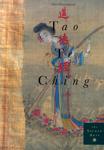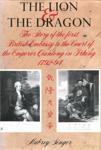Books about China
Page 7 (books 121 to 140)
These pages contain my reviews of books about China that have all been read when researching the information on this web site.
Note: many of the links to the books will earn us a small commission from Amazon if you decide to buy the book as we operate as an Amazon Associate.

The Genius of China, Robert Temple, Inner Traditions, 2007
285 pages. ISBN 978-0233002026 Details/purchase ➚
ISBN 978-0233002026 Details/purchase ➚ 



A survey of the extra-ordinary range of Chinese inventions. Robert Temple presents a gorgeously illustrated survey of Joseph Needham's mammoth work on Chinese Science and Civilization. Nearly everything you can think of from plastic to matches and rudders to bridges were invented in China hundreds of years before anywhere else. I would love to give it a whole-hearted 10/10 but its weakness is that Robert Temple has not looked anywhere else other than Needham's work and his views on first usage are widely challenged by other scholars. Some claims are poorly supported and he always takes the view China was there first. Although China did invent many things most of them were not taken up and lost. The huge number and longevity of Chinese writings has distorted the study of inventions, many could well have come from elsewhere, they were simply never formally recorded there. However it is a very readable account of Chinese ingenuity in every field.

The Giant Panda, Ramona and Desmond Morris, Kogan Page, 1981
179 pages. ISBN 978-0333324738 Details/purchase ➚
ISBN 978-0333324738 Details/purchase ➚ 

Covers all that was known about the Giant Panda when the book was written - initially in 1966. Since then a lot more has been discovered. Interesting chapters on how foreign adventurers came to China to hunt the Panda first as a trophy and then as a zoo specimen. Very little in the book about China itself.

The Good Women of China, Xinran, Vintage, 2003
230 pages. ISBN 978-0099440789 Details/purchase ➚
ISBN 978-0099440789 Details/purchase ➚ 



This book tells the often distressing fate of women in China. Xinran is a famous journalist who ran a popular confessional phone-in radio programme at Nanjing. Xinran followed this up by interviewing a number of these women. The author has a sympathetic, caring personality that allowed long held secrets to be unburdened. The main criticism of the book must be that some of the stories are now rather dated (some from pre-1949) and attitudes towards women have somewhat improved since those dark days.

The Great Encounter of China and the West 1500-1800, D. E. Mungello, Rowman and Littlefield, 2012
145 pages. ISBN 978-1442219755 Details/purchase ➚
ISBN 978-1442219755 Details/purchase ➚ 



This book is a fairly academic work with many references principally covering the Catholic missions to China. During this fascinating period the contrasting philosophies of Europe and China came into conflict. The book omits any mention of the Nestorian Christians or the activities of merchant adventurers and so gives an incomplete picture. I found Mungello's conclusions rather muddled and unconvincing.

The Great Wall, Man, Bantam, 2008
411 pages. ISBN 0-978-0-553-81768-3 Details/purchase ➚
ISBN 0-978-0-553-81768-3 Details/purchase ➚ 



Quite by chance I found this book while I was about to write about China's Great Wall. The Great Wall is China's most iconic feature. John Man undertook a trek to trace it through the deserts and grasslands of northern China. Along the way he met with many helpful locals who add greatly to the enjoyment of the book. The history of the wall comes in short sections scattered throughout the book so it is more of a travelogue than a reference work. It documents modern China as much as the Great Wall.

The History of the Ti-Ping Revolution, Augustus Lindley, Cox and Wyman, 1866
842 pages. ISBN 978-1481220446 Details/purchase ➚
ISBN 978-1481220446 Details/purchase ➚ 



Augustus Lindley went to China and fell in love with a Chinese woman and then became embroiled in the horrific Civil War in China. He backed the 'Christian' side - the Taipings and as they eventually lost the war, the Taiping point of view is rarely reported. We read of the 'good' side of the Taiping rebellion and very little of the confusion and megalomania that brought about its fall. For a Christian reader it challenges existing preconceptions of this great war.

The I Ching, James Legge, Clarendon Press, 1899
448 pages. ISBN 978-0486210629 Details/purchase ➚
ISBN 978-0486210629 Details/purchase ➚ 



One of the earliest translations of Yi Jing into English (1899) so it reads as rather dated. Such an ancient and revered text is most difficult to render in another language, this is a commendable attempt. It should only really be used in conjunction with more modern translations.

The I Ching: A Biography, Richard J. Smith, Princeton University, 2012
278 pages. ISBN 978-0691145099 Details/purchase ➚
ISBN 978-0691145099 Details/purchase ➚ 




An excellent survey of the history of the Yi Jing and its spread to Asian countries and then to the west. Looks at English translations and how the Yi Jing was used over the centuries. An invaluable background text for the subject written in a knowledgeable but accessible style.

The Illustrated Tao Te Ching, Man ho Kwok and Martin Palmer, Element,1993
189 pages. ISBN 1-85230-322-0 Details/purchase ➚
ISBN 1-85230-322-0 Details/purchase ➚ 




The choice of a translation of the Dao De Jing (Tao Te Ching) is a very personal one. I like this modern translation with its sleek presentation and carefully chosen words. It seeks to capture the spirit of the text, not a character by character transliteration. Each chapter (or page) has the text in calligraphy on one page faced by the translation on the other. Each page has a different painting as background. It is a bit of a shame it uses Wade-Giles rather than Pinyin in places.

The last days of Old Beijing, Michael Meyer, Walker, 2008
309 pages. ISBN 978-0802716521 Details/purchase ➚
ISBN 978-0802716521 Details/purchase ➚ 



In the run-up to the Beijing Olympics in 2008 priority was given to 'tidying up' Beijing ready for visitors. A particular target was the old hutong districts regarded by many planners as slums ideal for redevelopment. The author lived in the hutongs as a volunteer English teacher at a local school. He describes the misuse of planning to evict people from the last few, old districts and the general disregard for preserving the past. The book includes chapters on history and planning process but it is the detailed description of the hutong residents that brings the book to life. It is a distressing tale of how rapid modern development has destroyed age-old communities. Essential reading for anyone wanting to understand the hutong districts and how Chinese planning system works.

The Last Emperor, Edward Behr, Futura, 1987
335 pages. ISBN 978-0773680258 Details/purchase ➚
ISBN 978-0773680258 Details/purchase ➚ 


This is the book on which the major film 'The Last Emperor' was based. The life of Pu Yi gives keen insights into China in transition from Empire to People's Republic 1906-1967. This is a carefully researched work with personal interviews with key players who met Pu Yi. It underlines how chaotic life was at the time and the future of China was decided by many chance events.

The Lion and the Dragon, Aubrey Singer, Barrie and Jenkins, 1992
192 pages. ASIN B01HC0M56M Details/purchase ➚
ASIN B01HC0M56M Details/purchase ➚ 


This is an account of the very important British embassy to the court of the Qing Emperor Qianlong. It is a readable account compiled from the many journals of the British participants. There is relatively little about the Chinese side of this adventure which was doomed from the start. The mutual mis-comprehension of European and Chinese values and cultures is evident throughout the visit. It offers an outsider's view of the Manchu elite with rather little about ordinary China and Chinese people.

The Long March 1935, Dick Wilson, History Book Club, 1971
331 pages. ISBN 978-0670438457 Details/purchase ➚
ISBN 978-0670438457 Details/purchase ➚ 


This formative period of the Communist Party in China needs to be understood as it explains why the PRC took its truly revolutionary turn in the 1950s and 60s. The book has a good set of notes and references and uses material and photographs not used elsewhere. It includes a biography of Mao Zedong and Zhu De. It highlights the exaggeration of some of the accounts but includes them as they were important propaganda in the years that followed. The grueling record of the crossing of the Grasslands makes discomforting reading.

The Long March: The Untold Story, Harrison E. Salisbury, Harper and Row, 1985
419 pages. ISBN 978-0070544710 Details/purchase ➚
ISBN 978-0070544710 Details/purchase ➚ 


A detailed and authorative treatment of the Long March from Jiangxi to Yan'an with biographies of the main leaders. It lacks good detailed maps and a quick background list of the key people - too many names to take in. The last two chapters cover the Long March leaders experience under the Cultural Revolution and the rise of Deng Xiaoping. It's quite a hard read as there is so much detail to take in, but it is the details that are not reported elsewhere. It uses interviews and papers not available before 1985.

The Manners and Customs of the Chinese of the Straits Settlements, J.D. Vaughan, Oxford Asia Paperbacks, 1879
126 pages. ISBN 0-978-1241496104 Details/purchase ➚
ISBN 0-978-1241496104 Details/purchase ➚ 



This is a rare insight into the attitude of Englishmen towards the Chinese. It was written in 1854 and reflects the views of the time - European culture as superior and Chinese as quaint and strange. To understand the British perspective, it is important to try to understand the viewpoints at this time. The Chinese community described was at Singapore. The book is a collection of short pieces and it has no index. He plays particular attention to the secret societies that were prevalent at the time for leading the overseas communities.

The Memory Palace of Matteo Ricci, Jonathan Spence, Faber and Faber, 1984
350 pages. ISBN 978-0140080988 Details/purchase ➚
ISBN 978-0140080988 Details/purchase ➚ 



A deceptive title. This is much more about the life of Matteo Ricci and the work of the Jesuits than it is about China or memory palaces (disappointingly little). It seems the author thought that memory images would be a good way of dividing up the book into categories (warfare, foreigners, sin and Christianity) but it does not work well and he gives up on the idea part way through. It is very scholarly and factually dense making it a challenging read and he does not split up the long chapters into more manageable sections. Essential reading to get to the mindset of Jesuits in the late 16th century.

The New Chinese Empire, Ross Terrill, Basic Books, 2003
384 pages. ISBN 978-0465084128 Details/purchase ➚
ISBN 978-0465084128 Details/purchase ➚ 



This very negative book about China is typical of some American authors who think that the Chinese government is wholly evil and soon to fall. The diatribe is repetitive, only facts that support his view are included, it is totally biased. It was published in 2003 and all his dire predictions about China have failed to unfold as he predicted. This book is only interesting for some events in the 1980-2000 period and the fact it reflects the dominantly negative attitude held by some Harvard academics. His woeful misunderstanding and deliberate misreading of events is depressing in itself.

The Opium War through Chinese eyes, Arthur Waley, Stanford University Press, 1958
256 pages. ISBN 978-0804706117 Details/purchase ➚
ISBN 978-0804706117 Details/purchase ➚ 



It is important to see both perspectives of the Opium War conflict with Western powers in the mid-nineteenth century. This book uses the personal journals of the famous Commissioner Lin Zexu and other eye witnesses of the first War with the British. The book shines very useful light on different cultural attitudes and serious misunderstandings.

The Origin of the Chinese People, John Ross, Pelanduk, 1994
189 pages. ISBN 978-1330079515 Details/purchase ➚
ISBN 978-1330079515 Details/purchase ➚ 





This old but useful book looks at early China, up to the foundation of the Qin dynasty. It looks at the development of the written script and the philosophy of Kongfuzi (Confucius). At the time this was written (1916) the idea that China was a distinctly different civilization was a subject of debate among Western scholars. Many thought Chinese culture must have been an offshoot from the Middle East. This book puts forward a strong case that China developed in isolation and this important fact explains some key cultural differences up to the present day. It includes a number of illustrations of Zhou and Shang dynasty scripts.

The Peasant Family and Rural Development in the Yangzi Delta 1350-1988, Philip Huang, Stanford University Press, 1990
421 pages. ISBN 0-8047-1788-5 Details/purchase ➚
ISBN 0-8047-1788-5 Details/purchase ➚ 


An unusual academic study. It takes one area - the lower Yangzi - and follows agricultural practice over six hundred years. Most space and emphasis is given to the changes from 1950-1988. It is of interest to those studying the detailed develpment of agriculture in China.
Key to symbols used in the book descriptions
Note: More up-to-date editions of these books may well exist.
Many books cover more than one topic, these icons reflect all topics it may touch on.